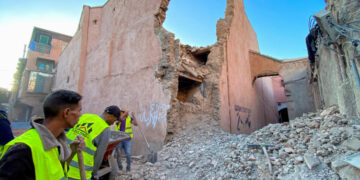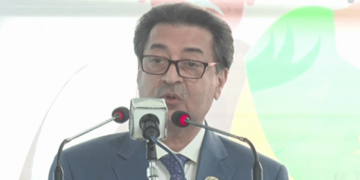For the root trigger evaluation process to be efficient, a corporation must coordinate its RCA activities amongst its numerous teams. Many of these products additionally embody options https://www.globalcloudteam.com/ constructed into their platforms to help analyze root causes. In addition, some distributors offer tools that collect and correlate the metrics from other platforms to help remediate a problem or outage event.

Transition To Corrective Actions

Isolate multiple contributing root causes rather than stopping at only one preliminary discovery. Particularly for advanced issues, multiple root failure factors could independently or collectively propagate deficiencies tied to the end observable defect. – The 5 Whys method sequentially probes with “why” questions to follow explanatory chains probing nearer to root causes. Dimension the scope of affect including breadth throughout the client base, affected product traces, or course of phases. Show why solving this problem merits prioritization based mostly on the depth of present impacts. Quantify how these presenting symptoms translate into tangible setbacks.
It is used as an umbrella term to refer to various instruments and techniques utilized to resolve the problem. This strategy is utilized across different industries, from healthcare and software program to environment and manufacturing. One of the extra widespread techniques in performing a root trigger evaluation is the 5 Whys approach. For each reply to a WHY question, observe it up with an extra, deeper “Ok, but WHY?
DMAIC is an acronym for the Outline, Measure, Analyze, Enhance and Control process. This data-driven course of enchancment methodology serves as a half of an organization’s Six Sigma practices. RCA can be used in conjunction with enterprise activity monitoring and sophisticated event processing to analyze faults in business processes. Costs to suppose about transcend finances when contemplating the personnel who function the machinery. Ultimately, the aim is to prevent downtime; but more so forestall catastrophic accidents.
Advantages Of A Root Cause Analysis For Groups
- Essentially, RCA provides a structured investigation process for identifying the true sources from which issues emerge in methods, products, workflows, or outcomes.
- As A Substitute of addressing only the surface-level points, delve deeper to identify the underlying reasons behind the issue.
- RCA analysis traces behind the symptoms to the supply inputs, course of weaknesses, and capability gaps giving rise to those surface-level problems.
- Root cause analysis (RCA) is a scientific problem-solving approach used to establish the underlying causes of a specific problem or downside, quite than addressing solely its signs.
Debriefing after an RCA — often called a autopsy — helps ensure the key gamers understand the time frames of casual or associated elements, their results and the resolution methods used. Autopsy information sharing can also lead to brainstorming around different areas which may need investigation and who should look into what areas. The proper tools could make the process quicker, more organized, and simpler to share. For visible strategies like fishbone diagrams or fault bushes, use a diagramming device that lets your staff construct and remark in actual time. For written methods like the 5 Whys or Pareto charts, a simple AI For Small Business document or spreadsheet is enough to observe findings and selections.
A thorough root cause evaluation (RCA) can not only determine and look at these individually, but additionally uncover how they’re connected, providing a comprehensive understanding of the underlying issue. This approach also explores contributing components, enabling more practical cloud software development company and holistic solutions. Root Cause Evaluation (RCA) is a important problem-solving approach used throughout many industries to uncover the underlying cause of an issue and stop its recurrence.
The team ought to evaluation the effectiveness of the counter-measures and determine if the issue has occurred since implementation of the counter-measures. The team should also review the method (if applicable) to guarantee all counter-measures are being followed. Successful root cause analysis also depends on good communication throughout the group and employees involved in a system.
There are a quantity of instruments that might be used throughout a Root Trigger Analysis. Some of them can sometimes be accomplished by one person, however generally a Cross Useful Group (CFT) strategy will reap the greatest advantages and improve probabilities of reaching the true “root cause”. To mitigate biases in RCA, it’s essential to approach the analysis with an open mind and gather objective data to assist conclusions.
Gather information, discuss to folks concerned, and make sure the issue’s importance. People check with those who are involved in the incidents (including the engineer, technician, and the final inspector assessing the safety). The third strategy named paper symbolizes the most recent inspection report and the company’s laws regarding the matter. In the following approach, positions are recorded in photographs to have correct entry to incident conditions. The first step is to clearly determine and define the problem at hand, specifying its scope and influence.
What matters most is that your instruments support collaboration, and that’s the place Slack comes in. Set a date to evaluate progress and keep the feedback loop open so modifications stick. Himanshu Juneja, the founding father of Administration Examine Information (MSG), is a commerce graduate from Delhi University and an MBA holder from the esteemed Institute of Management Technology (IMT). He has all the time been somebody deeply rooted in tutorial excellence and pushed by a relentless need to create value. An Ishikawa diagram (or Fishbone diagram) is a cause-and-effect style diagram that visualizes the circumstances surrounding an issue. The diagram resembles a fish skeleton, with an extended list of causes grouped into related subcategories.
style=”display:none;”>





















































